
A virtual tour in Venetian Heraklion
January 27, 2021
ARphymedes
January 21, 2021Mnesias
Implementation Period: 2018 - 2021Contracting authority: «Research - Create - Innovate» of EYDE/ETAK
Τοοls: Multimedia, web
A large number of Ancient Greek Musical Instruments are scattered in museums of Greece and abroad. Song and music were a big part of the rich Ancient Greek culture.
However, the research on the sound recordings of these instruments is poor both in national and international level. Thus, it is impossible for the visitor to approach even to the slightest how such an instrument could sound.
The purpose of the MNESIAS project is to study, develop and test with real users, easy-to-use, IT tools and applications through which:
a) Museologists will have the opportunity to create Acoustic Virtual Musical Instruments that will produce the sound of a specific ancient instrument.
b) Will enrich the experience of the local or online museum visitor and enhance it with the digital reconstruction of the sound produced by each specific exhibit when it was in use. At the same moment the visitor in real time will be able to interact and produce his own music.
c) The innovative know-how produced by the research will be promoted to the companies and will contribute to the improvement of their competitiveness, facilitating their entry into new markets.
Expected Results
The expected results of the MNΕSIAS project are as follows and are included in the corresponding tasks:
Systematic recording (of specific physical factors that determine sound production of AMIs) and classification of all available Greek AMIs exhibited at museums worldwide.
Development of generic innovative mechanisms for sound synthesis of authentic AMIs, based on Physical Modeling of sound generation and transmission, i.e. mathematical models which describe the physics of musical instruments.
Accurate reconstruction of all wind and stringed AMIs exhibited at the Archaeological Museums of Megara and Piraeus, for use in tasks 5 and 9.
Development of an innovative software application for the production of wind and string AVAMIs by the scientific personnel of the museums.
Development of innovative methodology for ensuring accuracy on sound representations of AVAMIs.
AVAMI development based on task 2 for all wind and stringed AMIs exhibited at the Archaeological Museums of Megara and Piraeus.
Development of innovative interactive guided tour software application for visitors within the museum (through interactive screens and mobile devices) as well as web-based visitors, with the use of fully developed Virtual Musical Instruments (VAMIs).
Study and application of the Universal Design principles for allowing individuals with disabilities to access the guided tour software applications of VAMIs (either locally or web based).
Design and development of museum-pedagogic digital applications for AMIs.
Applying usability tests with museum visitors for evaluating the software applications developed in tasks 7 and 9.
Elaboration of viability business and trade plan for each one of the innovative product solutions that will be generated through MNESIAS, concerning the opportunities emerged if services expand on various temporal, regional and cultural contexts worldwide (i.e. medieval, byzantine, traditional musical instruments of middle east, Africa, South America, etc.).
Multifaceted and wide spread dissemination of research outcomes to both international scientific community and the general public, through scientific publications, website, leaflets, public information event and participation in an international trade fair.
Mnesias program is implemented in collaboration with the Ephorate of Antiquities of Piraeus and Islands, the Ephorate of West Attica and the Speech and Accessibility Laboratory of the National Kapodistrian University of Athens.
More information can be found on the project's official website https://mnesias.uoa.gr/


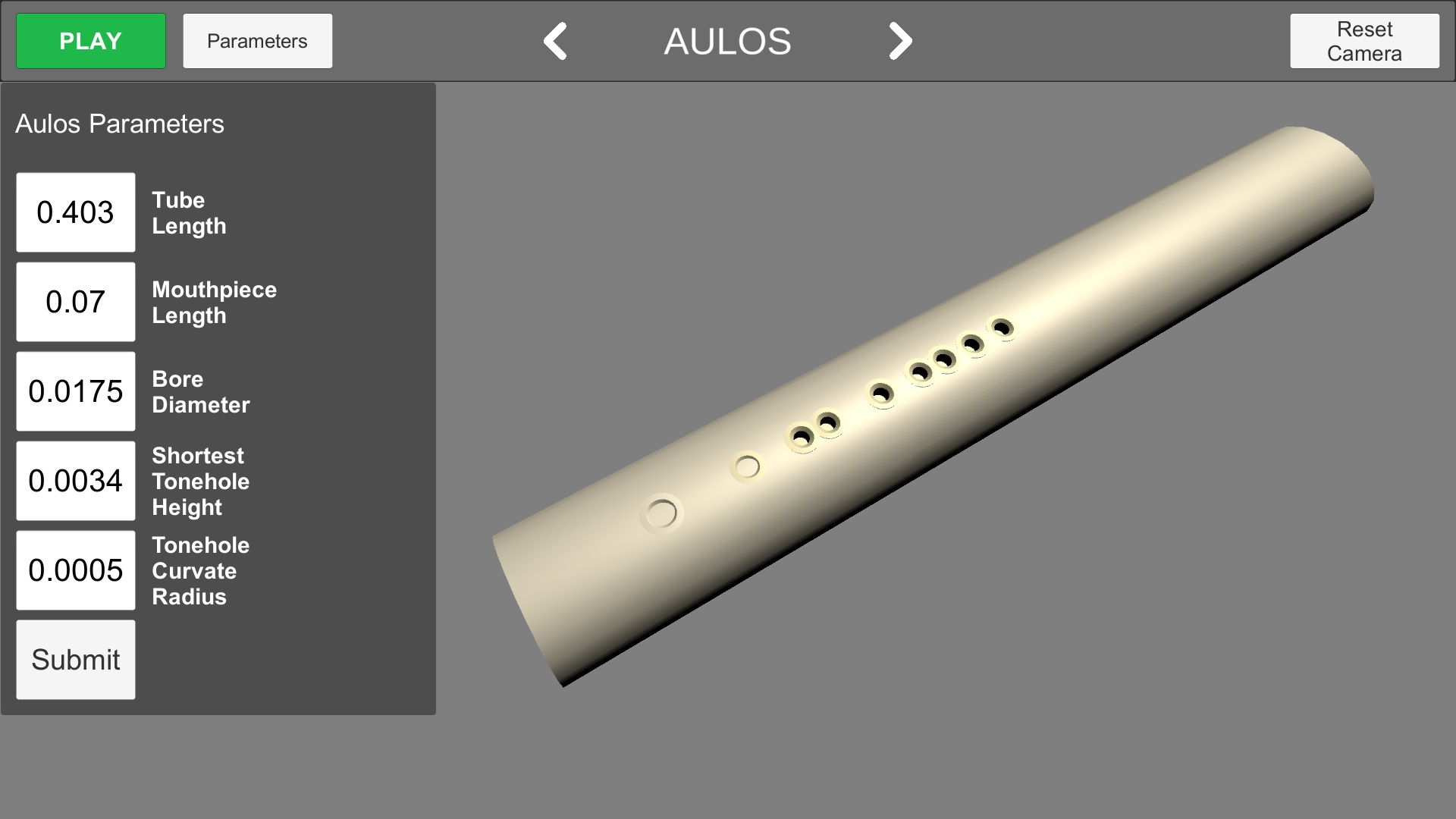
Phases of the project
- 1. Research and development of generalized mechanisms of physical modeling of Ancient Greek Musical Instruments
- 2. Design and Development of an application for the production of specific Acoustic Virtual Musicians Instruments
- 3. Reconstruction of Ancient Greek Musical Instruments and methodology to ensure accuracy of the sound produced
- 4. Development of pilot applications for the use of Ancient Greek Virtual Musical Instruments
Visitors App
The "Mnesias" application is for computer (pc), internet (web) and mobile (mobile) devices The user of the application has the ability to use it in real time and find out in which Museum there are the respective exhibits of the musical instruments. Depending on the settings that will be chosen by each visitor, the appropriate sounds will be played.
The two museums that have the original findings of the ancient musical instruments represented in the application are the Archaeological Museum of Piraeus and the Archaeological Museum of Megara.
The user will be able to select the musical instrument of his choice and then "play" with its characteristics by selecting the sound tube that wants to load the corresponding sounds, ie Heavy or Acid. The user will be able to make some more modifications thus giving him the opportunity to understand in depth how these instruments worked.
The application has been uploaded and is available for Android and iOS. Here are some pictures with the interface of the application.
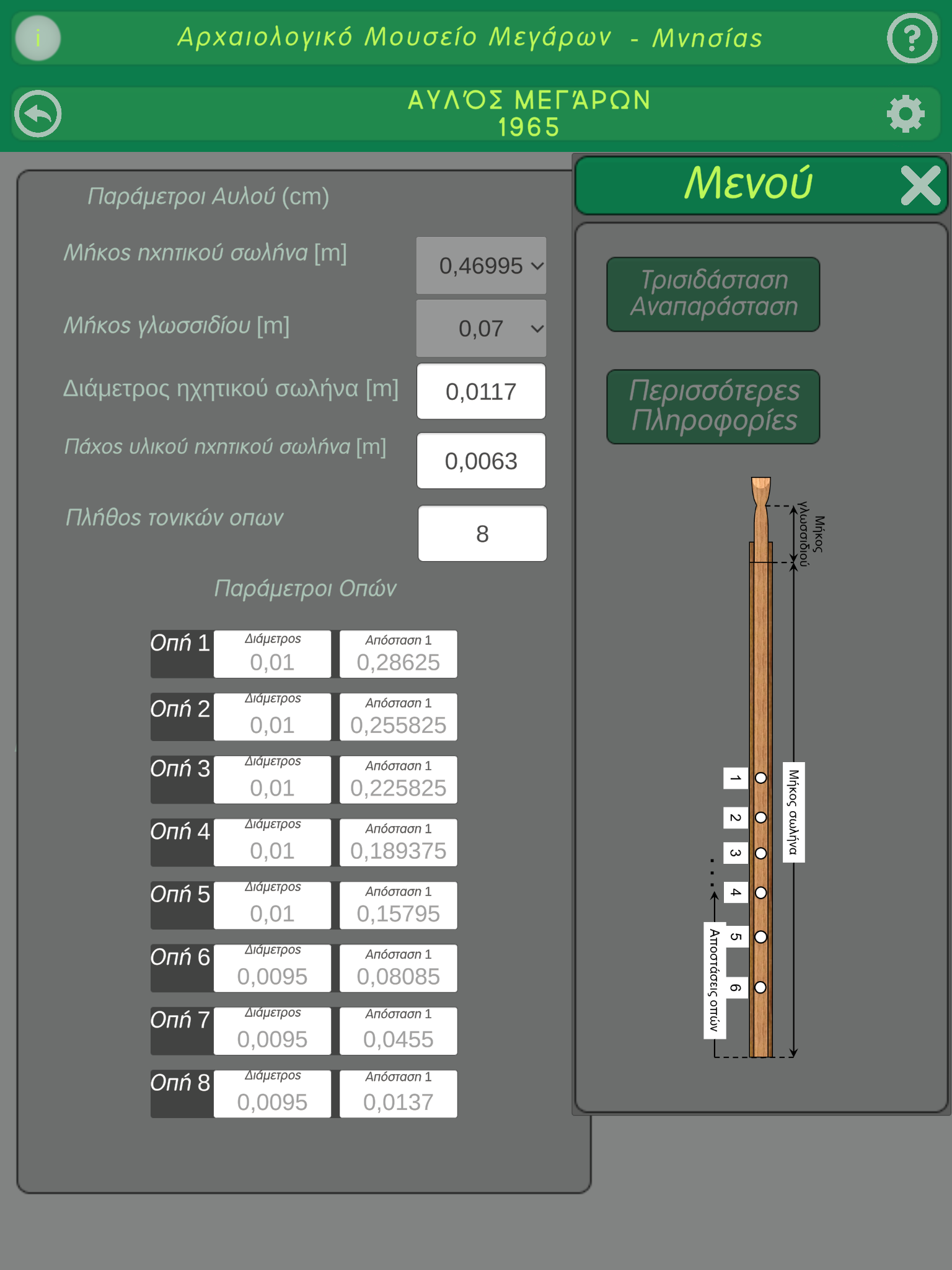
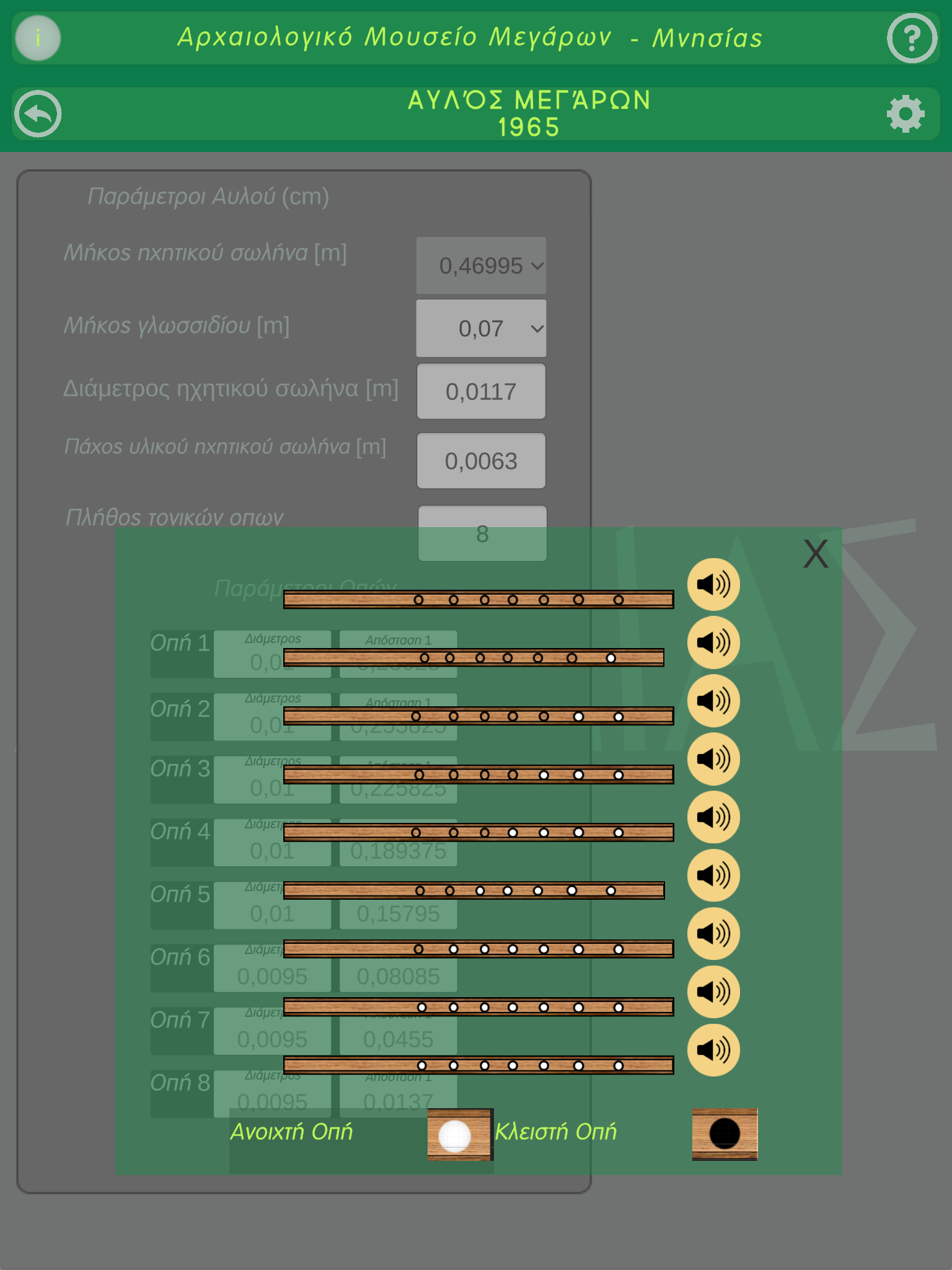
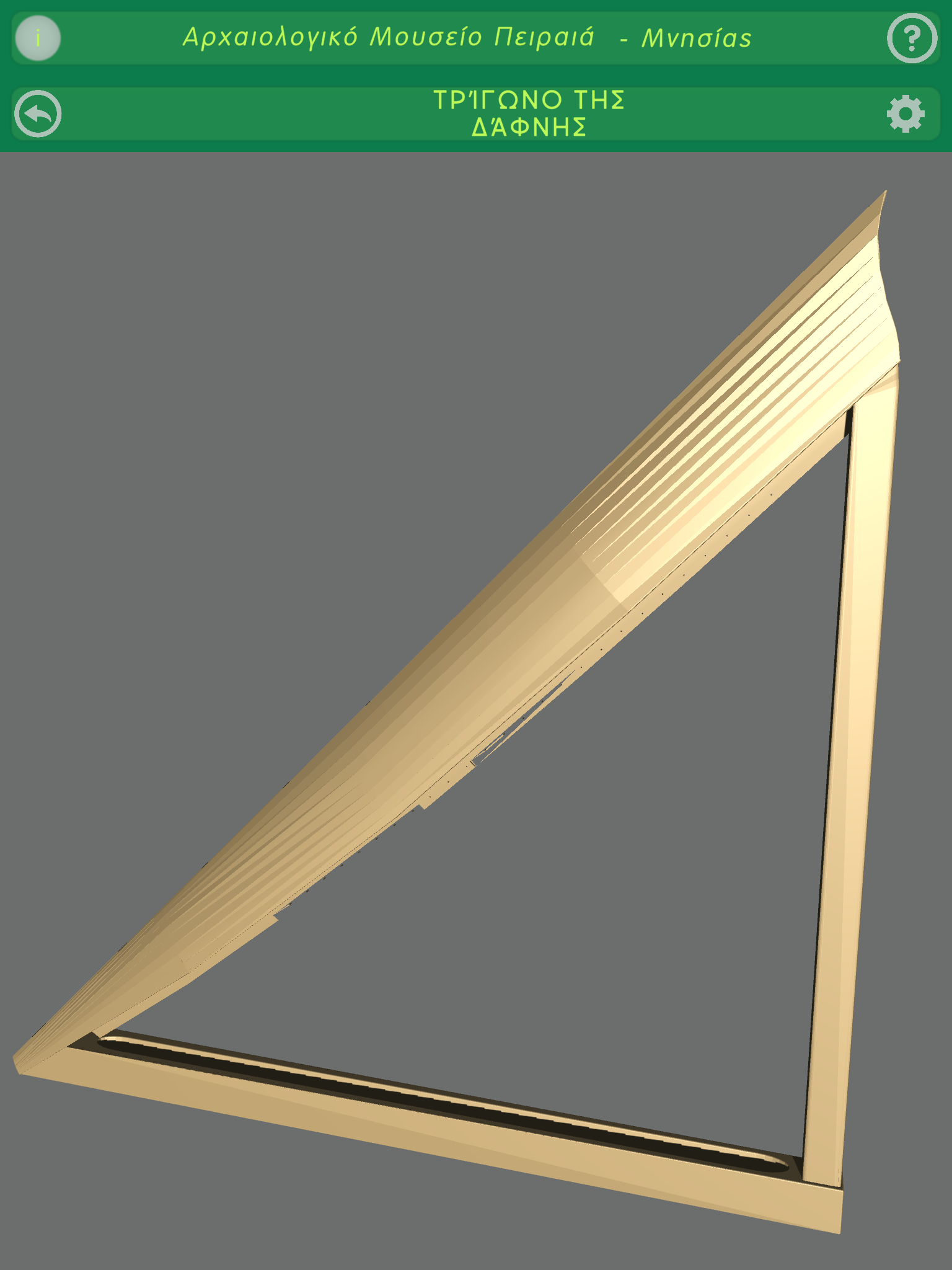
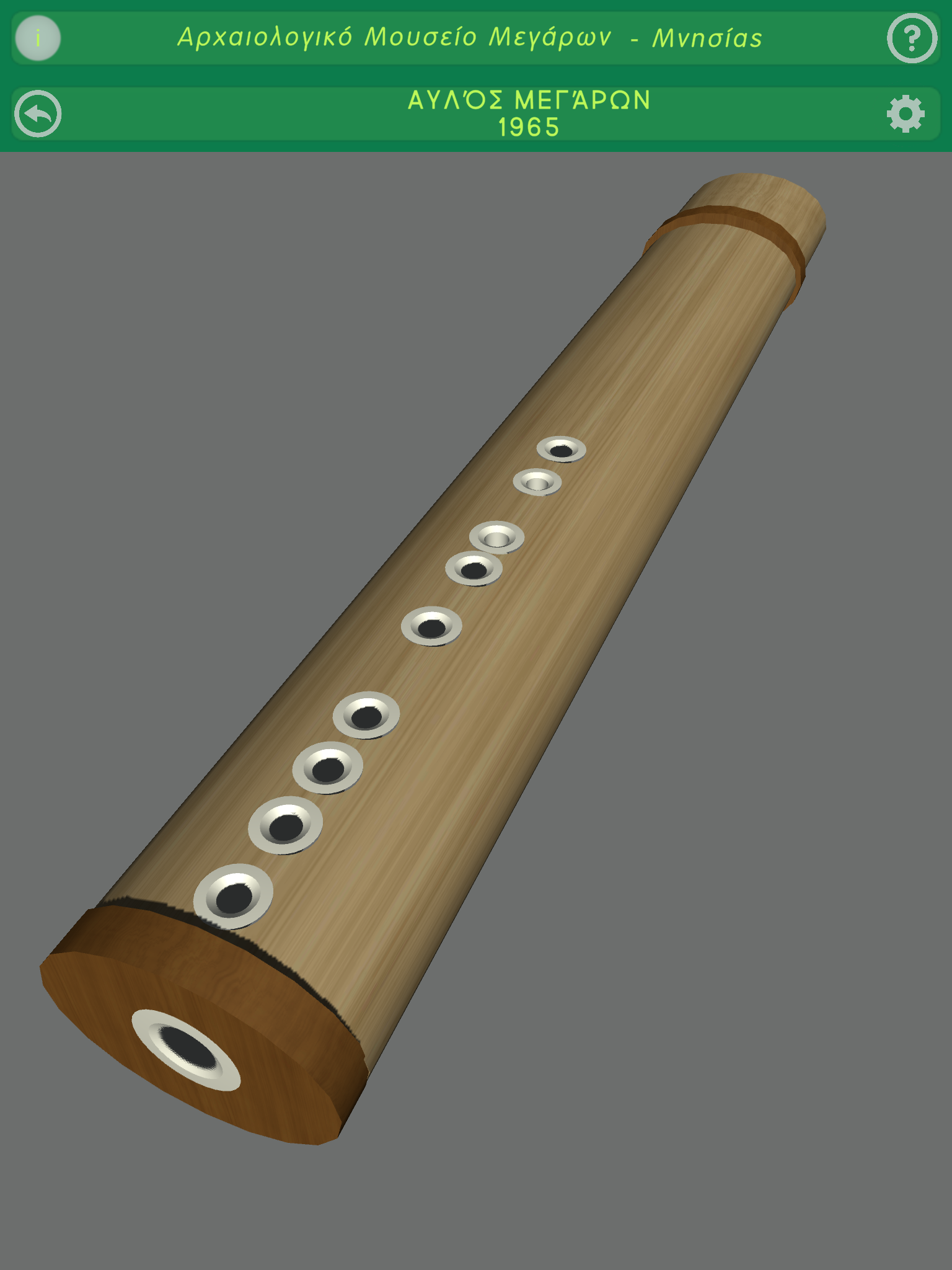
Educational App
Our company, following the creation of the application of museologists and visitors, continues with the design of an educational application for the Mnesias project. The application we are designing will include pedagogical games which will be addressed to museums' audience in order to familiarize children with the sounds and the Ancient Musical Instruments. The games that were designed concern Preschool education, Primary and High School. The game designed for Preschool is based on the myth of Aesop for the Hare and the Turtle. The two animals represent an ancient musical instrument. The user hears a sound and then has to choose whether what he heard was a lyre or a flute (seeing both instruments reconstructed in an image). If the turtle or the hare answers correctly, it will move towards the end, respectively, while if it answers incorrectly, it will not move forward. The game, intended for primary school children, aims to teach the user both the sounds and colors of the ancient musical instruments and in which areas of the then Greek-speaking geographical area they played them. The children will see a map of Greece where they will be able to choose in various marked places where ancient instruments have been found. When they select the point a window with information about the instrument will open as the corresponding audio material will be heard The last game for High School children gives the user the opportunity to learn the sounds and colors of the ancient musical instruments but also the frequency proportions of the notes. The game will be based on the story of Pythagoras. Pythagoras will walk and stand at tonal intervals. There he will explain with a text the reasons, the Tetraktys, the theory of spheres, the tetrachords, the scales, etc. Then the user will choose an instrument that will play the note and the corresponding scale.




